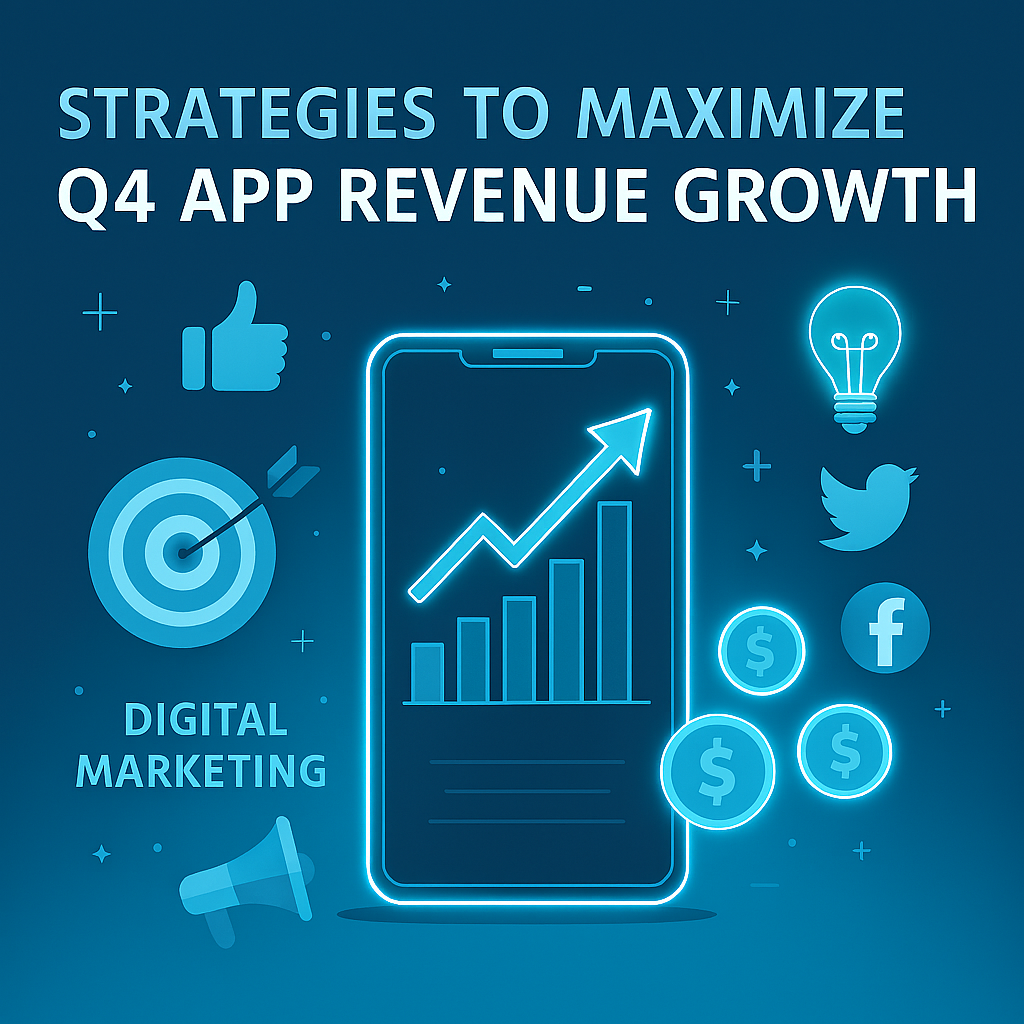Why is it important to have a good User Acquisition Strategy?
User acquisition has become a key priority for app marketers and developers. This process involves employing different strategies to attract users, increase app downloads, engage users effectively, increase app revenue, and build lasting loyalty.
In this article, we’ll explain why an effective User Acquisition Strategy is essential for the success of any app and give you some tips for optimizing your strategy. To generate revenue and promote your game or app, attracting users is crucial.
These are the key reasons why having a good UA strategy is vital for mobile app companies:
- Growth of your app: as your user base expands, so does your app's influence and visibility in the market. Without a strategy for attracting new users, your app may face restricted growth, limiting its reach.
- Competitive advantage: there is a high competition between apps, so a well-thought-out user acquisition strategy distinguishes your app from others, making it more inviting to your target audience.
- Revenue generation: a good UA strategy is essential to monetize your app. Acquiring users that are more likely to be active and make in-app purchases (IAP), will increase the profit and make your app grow.
- User engagement: by attracting users who have an authentic interest in your app, you will promote user engagement, building a loyal user base.
Apps can only be successful if they acquire users, and user quality matters as much as quantity. That’s because you only want to have users who will keep your app installed and continue using it. For this reason, a user acquisition strategy for apps should focus on targeting the right users, with the goal of having positive ROI. The ultimate goal is to grow your app and push it to the top of the charts.
How to Acquire Users for an App?
There are various strategies that will help you acquire valuable users, mainly divided into organic and paid acquisition strategies. The one you will use depends on the app’s unique needs.
Organic user acquisition focuses on attracting users to your app through non-paid methods. These types of strategies involve naturally increasing your app's visibility and attract users without relying on paid advertisements. Some of the organic user acquisition strategies are: App store optimization (ASO), encouraging user reviews, creating engaging content, building an email list to reach out to potential users.
In this article we will focus on paid user acquisition strategies. These types of strategies are used to acquire new users for mobile apps through paid advertising channels.
Paid User Acquisition Strategies
Paid user acquisition involves investing in advertising campaigns to drive app installs. It is an important part of the user acquisition process for several reasons: it allows you to reach a large and targeted audience in a quick way, offering a predictable method to attract new users to your app.
One of the most effective paid acquisition strategies is mobile advertising. These ads aim at people who are likely to be interested in your app, making it easier for them to find and download it. It’s a quick way to increase your app’s visibility and raise the download numbers.
A good User Acquisition strategy is using the right Ad format. There are different Ad formats in mobile app marketing:
- Banner ads: positioned at the top or bottom of the interface, providing a constant presence throughout the user experience.
- Interstitial ads: these full-screen ads strategically make their appearance during natural breaks in the user’s session, such as between interfaces or during loading moments. Their visibility and engagement are significant, because users tend to be more receptive to ads during these intervals.
- Video ads: they appear in the full mobile screen with captivating, high-quality videos. These ads not only grab attention but also convey information about the mobile game in an engaging way through striking visuals. They demonstrate great user engagement and retention rates.
- Playable ads: one of the most employed formats in mobile games advertising, these ads introduce an interactive gaming element. Playable ads have proven to be a highly effective mobile app marketing tool, driving considerable revenue.
- Rewarded video ads: ads offer users a value exchange, providing incentives such as in-app currency, extra lives, or premium content in return for watching a video ad. This format is effective as it creates a mutually beneficial scenario for both gamers and advertisers.
App marketers have many different options when choosing channels for their mobile user acquisition strategy. Adopting an effective approach, businesses can identify the channels that will help the app achieve its full potential.
These are some paid user acquisition channels that advertisers can choose:
- Search ads: these ads allow you to display your app at the top or bottom of search engine results, reaching users actively searching for keywords. This channel provides high visibility and targets users with specific intent who are more likely to convert.
- Social media ads: social media platforms such as Instagram, Facebook, TikTok, and Twitter provide powerful advertising tools that allow for targeted outreach based on factors like demographics, interests, and behaviors. As a result, app owners can gain valuable insights into what drives conversions and identify their most engaged audiences.
- Influencer marketing: this is an effective paid acquisition channel, because collaborating with influencers who will sponsor your app, can help you reach their audience and build credibility. To achieve success in influencer marketing, you need to choose your partners wisely, and create engaging and innovative content.
- Performance-based platform: Ad Networks and Demand Side Platforms (DSPs) are two platforms that have the aim of maximizing the advertising campaign, to achieve the expected results. An Ad Network is a platform that acts as an intermediary between advertisers and publishers, playing a vital role allowing advertisers to find available advertising spaces on websites or mobile apps. DSP is a technology platform used in digital advertising for mobile app marketing that allows advertisers to buy and manage online ad inventory across multiple digital channels. Both serve as vehicles that make the online advertising system work automatically.
Paid user acquisition has increased its impact on the quality of new users over the years. Thanks to ever more sophisticated machine learning algorithms and technologies, paid UA channels are able to precisely target the highest quality users for the advertised app.

Optimize User Acquisition Strategies towards KPIs
In mobile app marketing, understanding the effectiveness of your UA efforts is fundamental for the success of any mobile user acquisition strategy. Measuring key performance indicators (KPIs) allows you to gain valuable insights into the impact of your campaigns. Through the analysis of these metrics you can optimize your strategies and drive steady growth. Each KPI serves as crucial indicators in the mobile user acquisition strategy, contributing to the overall success of the mobile app.
Thanks to KPIs, the marketing team will figure out if the user acquisition strategy is effective or if it needs to be adjusted. The KPIs you prioritize should reflect the overall objectives of the user acquisition strategy. KPIs are also used to compare the different UA channels and which ones work best and why.
Here is a list of strategic Key performance indicators:
- Return On Ad Spend (ROAS): it determines the profits that the advertising has produced. ROAS will identify the most effective channels, and, not only the cost of acquiring users, but how much revenue those new users bring in. Keeping track of the ROAS is a helpful way to understand if your User Acquisition campaign is successful and you are attracting high-quality users to your app.
- Return On Investment (ROI): it calculates the total cost of the advertising campaign, it means that it is basically calculating your net income. This metric is more focused on long-term profitability, in fact it takes into account the Lifetime Value (LTV). ROI is an important KPI to be aware of, especially when thinking about optimizing your User Acquisition strategy.
- Click-through rate (CTR): it measures if your message is convincing, and if people are interested in learning more and downloading your app. CTR will indicate how well your creative, copy, channel, and ad format are performing.
- Conversion rate (CVR): it’s the percentage of people exposed to an ad who proceed to download the app. It’s used to see if the ads are working. Conversion rate is an indicator of the quality of your UA. This metric is also often used by Mobile Measurement Partners (MMPs) to assess possible cases of fraud.
- Lifetime value (LTV): it measures how much value each customer brings to the business, over the whole time they spend using the app. This will help you evaluate which campaigns and channels are driving users with high LTV.
Defining the most effective KPIs will provide a solid basis for strategic decision making and help you focus your efforts and budget on what matters most for your user acquisition campaign.
Key Considerations for an Effective User Acquisition Strategy
- Establish clear goals: develop specific objectives, relevant to your app that enable you to effectively assess your success.
- Monitor KPIs: observe closely the Key performance indicators (KPIs), like conversion rate, return on investment, lifetime value, click-through rate, and return on ad spend.
- Define your target audience: this allows you to create more personalized campaigns, building a loyal user base.
- Drive quality over quantity acquisition: this will ensure long-term success. The strategy is to acquire high-quality users who are more likely to engage and become loyal customers, and consequently they will contribute positively to your app's growth.
- Consider local needs: as you scale your user acquisition campaigns to reach a larger or even global audience, localization becomes a pivotal strategy for maximizing your impact. Localization involves adjusting your app, messaging, and marketing efforts to align with the cultural, linguistic, and regional preferences of your target markets. This is a good strategy to meet the unique needs of users, building loyalty.
Having an effective User Acquisition strategy is essential in today’s digital landscape. Every element of the acquisition process is crucial for achieving growth and success. A good User Acquisition strategy ensures that your app will reach its full potential.















.jpg)




